Persian Yellow Rice is a flavorful, easy recipe and a must-have side dish. Fluffy rice cooked in saffron-chicken broth. Ready in 30 minutes!
Quick Introduction
Also known as Saffron Rice, Persian Saffron Rice, or Pulao, this tasty and easy Persian Yellow Rice is a staple in Persian and Middle Eastern cooking. Made in just 30 minutes and with only 5 ingredients, this vibrant yellow (with no food coloring!) Persian rice is savory yet slightly sweet and will bring an international flair to any weeknight dinner. Boldly seasoned, bright turmeric rice is essential to exotic dishes like Halal Cart Chicken or Vegetable Biryani. This saffron-infused Rice Recipe is just as bold and flavorful and can be served as a side in any cuisine!
What is Saffron?
Saffron is a prized spice derived from the dried stigmas of a pretty purple flower in Persia. It gives a vivid yellow color and a subtle, earthy, and floral flavor to dishes.
Saffron threads are an expensive spice to keep on hand, but luckily a little goes a long way. Like many spices, you want to store saffron in its whole form and grind it fresh to make a dish like Persian Yellow Rice. Use a mortar and pestle for the best results, an electric grinder will trap too much of the valuable saffron. Freeze saffron threads to keep them fresh and flavorful for longer.
Saffron-infused Persian Yellow Rice is an essential side for Persian dishes, but it goes well with dishes from around the world! The key is to pair Saffron Rice with dishes that won’t overpower the subtle fragrant flavor. Serve Persian Yellow Rice with exotic dishes like Indian Butter Chicken and Cuban Mojo Pork or with everyday favorites like Roast Chicken.
What is Sumac?
Sumac is a spice made from the ground-up vibrant dark-red berries of the Sumac shrub and grows wild in Persia and the Mediterranean. It is related to poison sumac which has white berries.
It is another traditional spice found in a lot of Middle Eastern and Persian recipes. Sumac has a tangy, lemony taste that is slightly fruity. Sumac is what gives the za’atar spice blend (huge in Middle Eastern cooking) its signature flavor. It’s a versatile spice that brings a lot of flavor and pairs perfectly with the saffron.
Can I Make Persian Rice Ahead of Time?
Yes, you can prepare Persian Yellow Rice ahead of time. Cook the rice as instructed and let it cool. Reheat it gently before serving. Remember to garnish with sumac just before serving to maintain its vibrant color and flavor.
Images: How to Make Persian Rice
Table of contents
- Quick Introduction
- Images: How to Make Persian Rice
- Sabrina’s Persian Yellow Rice Recipe
- Ingredients
- Kitchen Tools & Equipment
- How to Make Persian Yellow Rice
- Nutritional Facts
- How to Store Leftover Persian Yellow Rice
- Alternative Cooking Methods
- Frequently Asked Questions
- Recipe Card
- Variations on Persian Yellow Rice
Sabrina’s Persian Yellow Rice Recipe
Persian Yellow Rice is a dish that sounds fancy and complicated, but it comes down to a handful of specific ingredients and a few step-by-step instructions. You want to use fragrant long-grain rice like basmati or jasmine rice, and of course, you need saffron. You could use turmeric instead, but the subtle floral flavor of saffron is worth the extra cost.
Of the different types of Persian Rice dishes that you can make, this is the most simple and straightforward saffron rice recipe. The saffron is soaked in chicken broth for at least 20 minutes so you get bold flavor and color using a tiny amount. Instead of being loaded with dried fruits and nuts, fried, or even cooked with onions, this Persian Yellow Rice recipe allows the saffron to shine.
Ingredients
- ⅛ teaspoon Ground Saffron: Saffron imparts a beautiful yellow color and a unique floral flavor to the rice.
- 2 cups Boiling Water: Boiling water is used both to steep the saffron and as the primary liquid for cooking the rice.
- 2 tablespoons Butter: Butter adds a rich and creamy texture to the rice, enhancing its overall flavor. It also helps prevent the rice from sticking to the pot during cooking. You can substitute with oil for a dairy-free option.
- 1 cup Rice: Rice is the main ingredient and the base of this dish. It absorbs the saffron-infused liquid and becomes tender and aromatic. Basmati rice is a popular choice for this recipe due to its fragrance and long grains.
- 1 teaspoon Salt: Salt is essential for seasoning the rice and enhancing its flavor.
- 1 teaspoon Ground Sumac: Sumac is used as a garnish and adds a tangy, citrus-like flavor and a pop of color to the finished rice. It complements the saffron and elevates the overall taste. You can omit it if you don’t have sumac or replace it with a squeeze of lemon juice for a similar tangy effect.
Kitchen Tools & Equipment
- Dutch Oven: A large, heavy pot with a tight-fitting lid used for cooking the rice. It ensures even heat distribution and helps prevent the rice from sticking. A non-stick pot can also be used.
- Measuring Spoons: To accurately measure the saffron, salt, and ground sumac.
- Boiling Pot or Kettle: To boil the water for steeping saffron and adding to the rice. It’s quicker and more convenient than using a stovetop pot.
- Stirring Spoon: A long-handled spoon for stirring the rice and butter mixture. A wooden or silicone spoon works well to prevent sticking.
How to Make Persian Yellow Rice
Time needed: 30 minutes.
- Step 1: Steep Saffron
In a small bowl, steep the saffron in ½ cup boiling water (or chicken broth) until it turns yellow.
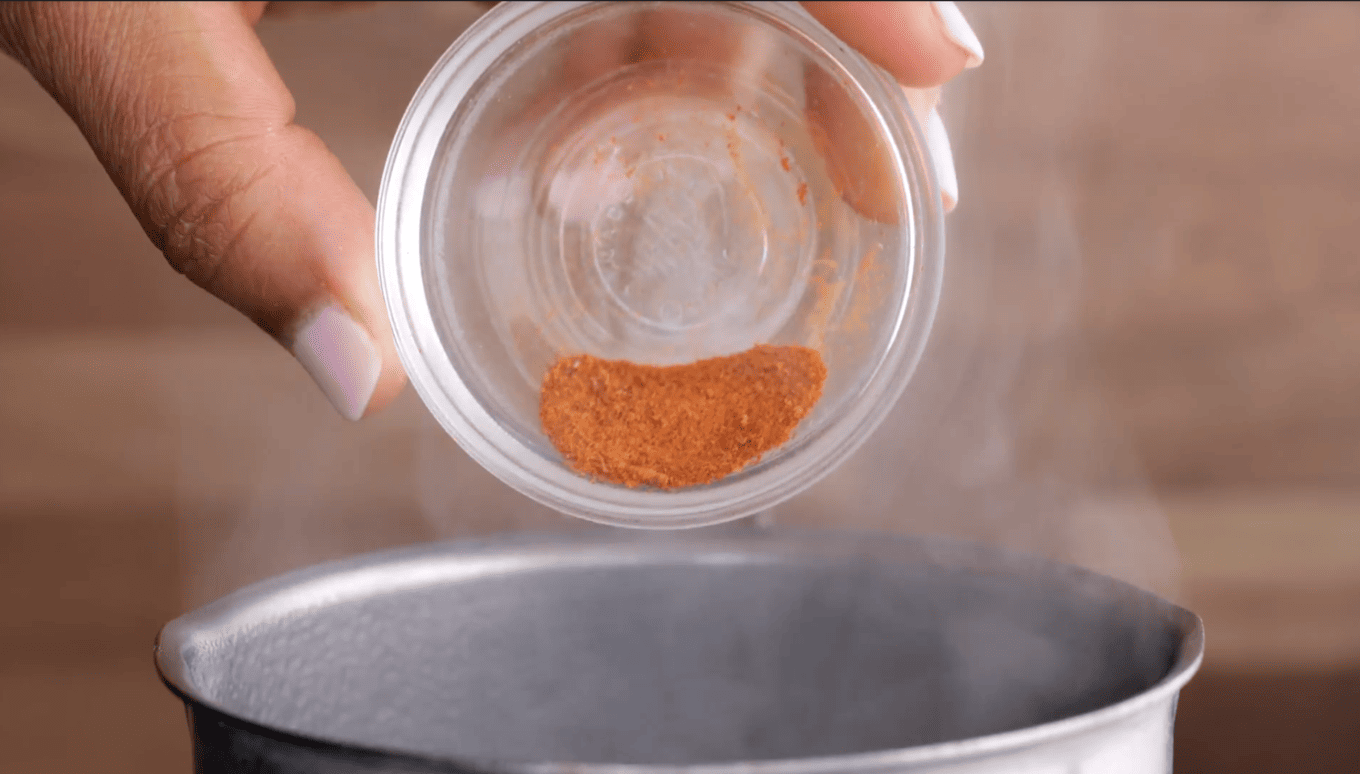
- Step 2: Melt Butter and Add Rice
In a large Dutch oven over medium-high heat, melt the butter. Stir in the rice and salt, cooking until the rice becomes opaque but not browned.

- Step 3: Add Boiling Water and Saffron
Pour in the remaining 1 ½ cups of boiling water (or chicken broth) along with the saffron-infused liquid.

- Step 4: Cover and Cook
Immediately cover the Dutch oven with a lid, reduce the heat to low, and cook for 20 minutes or until all the liquid is absorbed.
- Step 5: Garnish and Serve
Once cooked, garnish the Persian Yellow Rice with ground sumac. Serve hot and enjoy! Do not remove the lid while cooking for best results.
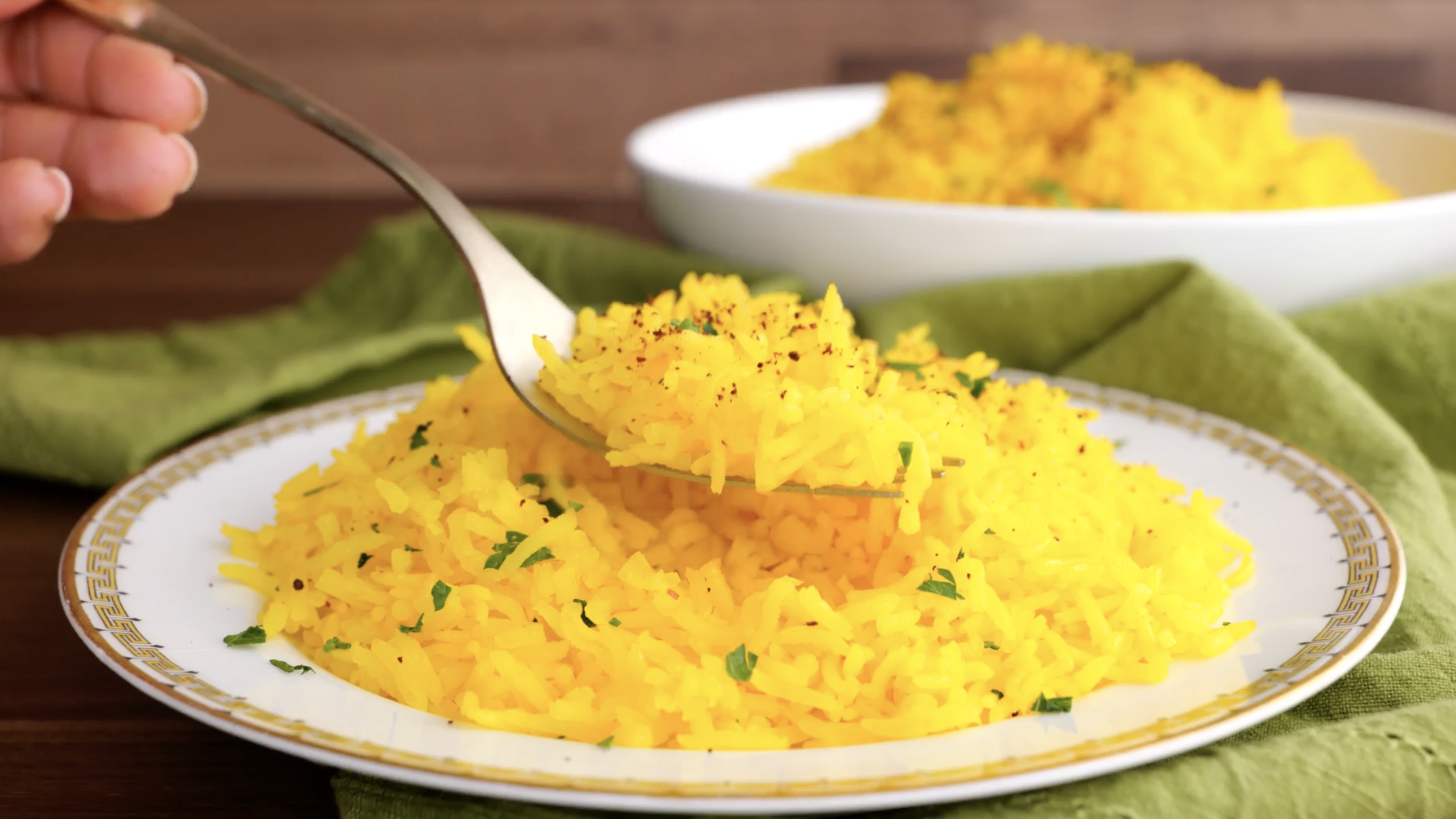
Nutritional Facts
How to Store Leftover Persian Yellow Rice
Storing Leftovers
To maintain the flavor and texture of leftover Persian Yellow Rice, transfer it to an airtight container once it has cooled to room temperature. Ensure the container is tightly sealed to prevent moisture loss and contamination.
Reheating Tips
When reheating, sprinkle a little water or broth over the rice before covering it with a microwave-safe lid or damp paper towel. This prevents the rice from drying out during reheating. Heat in short intervals, fluffing the rice between each, to ensure even heating.
Freezing
To freeze Persian Yellow Rice for longer storage, let it cool completely, then pack it in an airtight container or heavy-duty freezer bags. Squeeze out excess air to prevent freezer burn. Label with the date for easy tracking.
Alternative Cooking Methods
Instant Pot Persian Yellow Rice
- Steep saffron in boiling chicken stock or water for 20 minutes.
- Turn Instant Pot on to Sauté Function. Melt butter, coating the bottom of the pot.
- Add rice and salt, stirring until butter is absorbed but don’t brown rice.
- Turn off Instant Pot and add the saffron stock and remaining broth, stirring until combined.
- Seal lid and pressure valve. Set manual pressure on high and cook for 4 minutes.
- Release pressure naturally. Fluff rice with a fork and garnish with sumac before serving.
Rice Cooker Persian Yellow Rice
- Steep the ground saffron threads in ½ cup boiling broth (or water) for 20 minutes.
- Add the saffron-infused broth and the remaining ingredients to the rice cooker.
- Stir to combine and secure lid.
- Set rice cooker to white rice function (if it has one) and cook. Fluff with fork and sprinkle with sumac to serve.
Frequently Asked Questions
Yes, you can substitute saffron threads for ground saffron in this recipe. Use a pinch of saffron threads and crush them to release the flavor and color. It’s a viable alternative.
If you don’t have ground sumac, you can substitute it with a mixture of lemon zest and salt. Simply combine lemon zest and a small amount of salt to mimic sumac’s tangy and citrusy flavor.
Keeping the lid on during rice cooking is crucial to trap the steam. This steam helps the rice cook evenly and prevents it from drying out. Removing the lid prematurely can lead to unevenly cooked or dry rice.
To prevent the rice from sticking, make sure to stir it with the melted butter until it becomes opaque but not browned. Additionally, using a non-stick Dutch oven or pot can help minimize sticking.
Recipe Card


Ingredients
- 1/8 teaspoon ground saffron , about a pinch saffron threads
- 2 cups boiling water , divided
- 2 tablespoons butter
- 1 cup rice , rinsed
- 1 teaspoon kosher salt
- 1 teaspoon ground sumac
Instructions
- Steep the saffron in ½ cup boiling water or chicken broth.
- In a large Dutch oven, melt the butter over medium-high heat.
- Stir in the rice and salt.
- Cook, stirring constantly, until the rice begins to absorb the butter and becomes opaque, but do not brown the rice.
- Pour the remaining 1 ½ cups boiling broth (or water) along with the saffron-infused broth and stir.
- Cover immediately, reduce to low heat, and cook 20 minutes, or until all of the liquid is absorbed.
- Garnish with sumac to serve.
- Note: For best results, do not remove the lid while the rice is cooking.
Notes
Nutrition
Variations on Persian Yellow Rice
- Rice: While you can use any rice, you want to use a long grain white rice to make Persian Yellow Rice for the fluffiest, tastiest rice. Jasmine rice is the best substitute for basmati rice.
- Vegetables: For an easy Rice Pilaf-style dish, add microwaved frozen peas and carrots, or veggies like cauliflower, bell peppers, onions, or broccoli.
- Tahdig: Tahdig is pre-cooked saffron rice with mix-ins like Marcona almonds, dates, Turkish apricots, and pistachios added. Once you mix everything, pan-fry the rice in a skillet with ghee or butter until a golden crust is formed.
- Spices: Other traditional spices used in Persian cooking that complement saffron are cardamom, turmeric, orange zest, and coriander.
- Vegan: Easily make this Vegan Persian Rice and substitute vegetable stock for the chicken stock and use coconut oil, vegetable oil, or olive oil for the melted butter.
More Exotic Rice Recipes
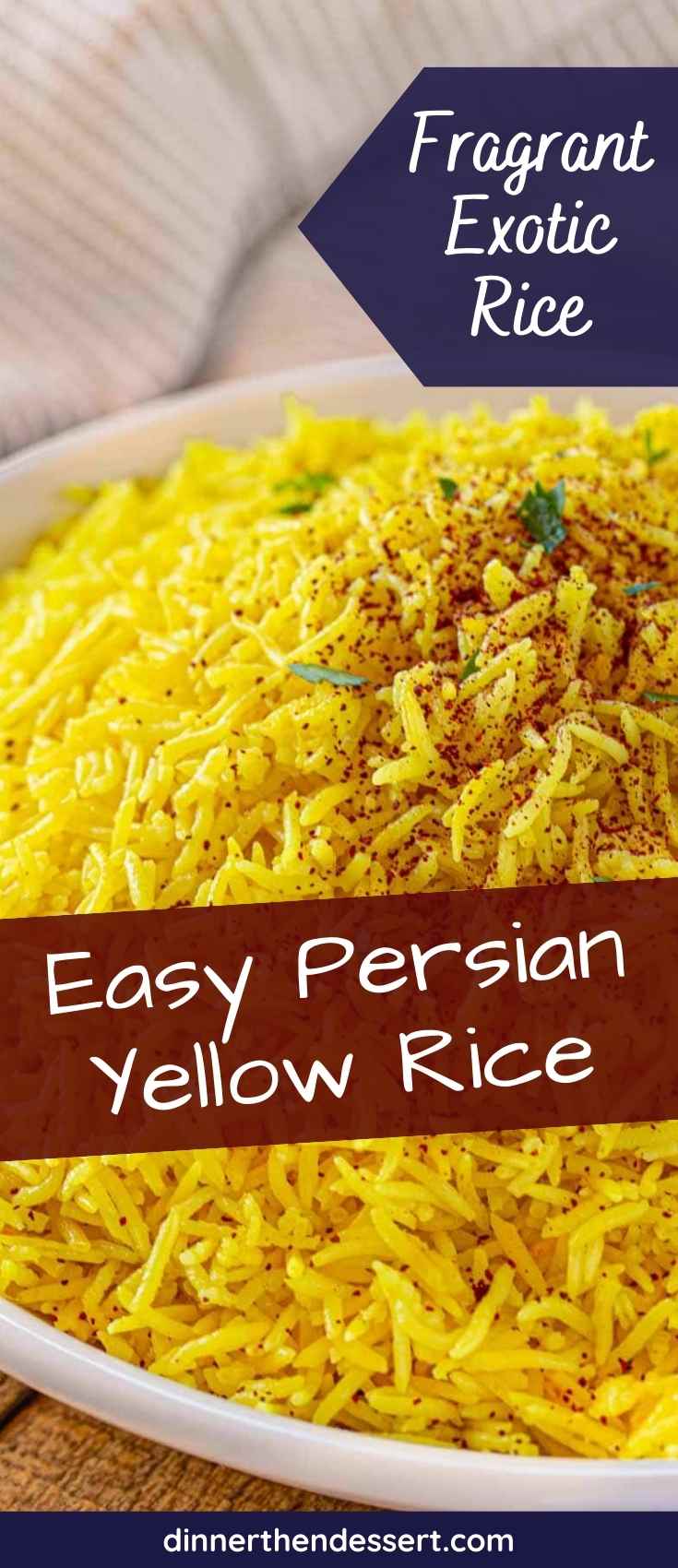
Photos used in previous versions of this post.

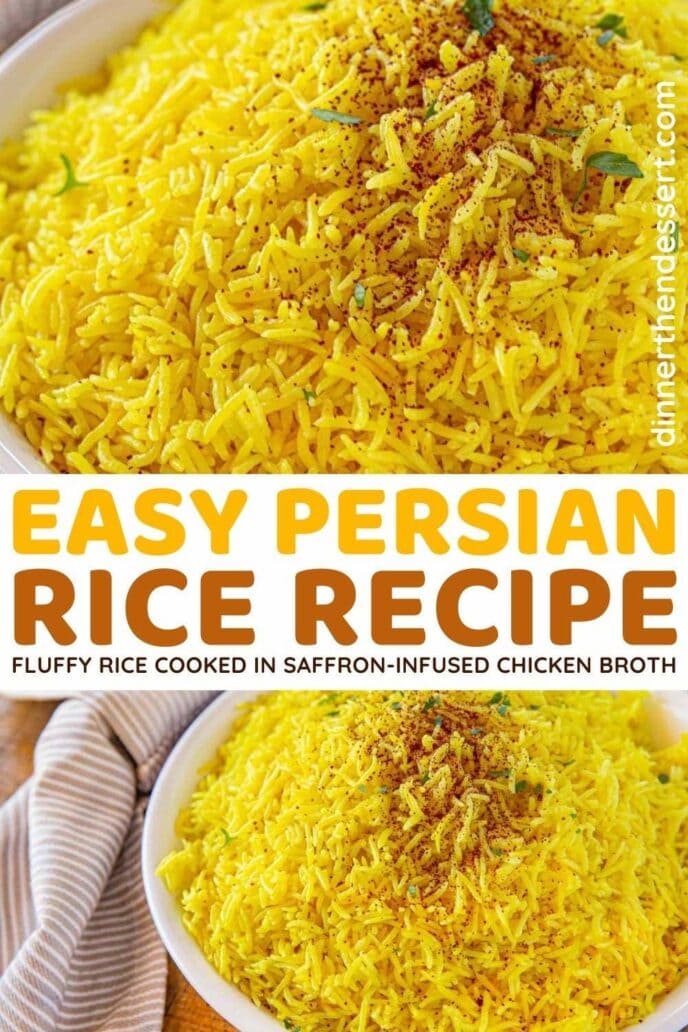

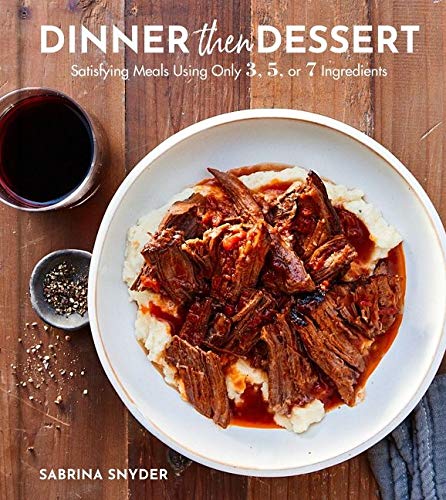
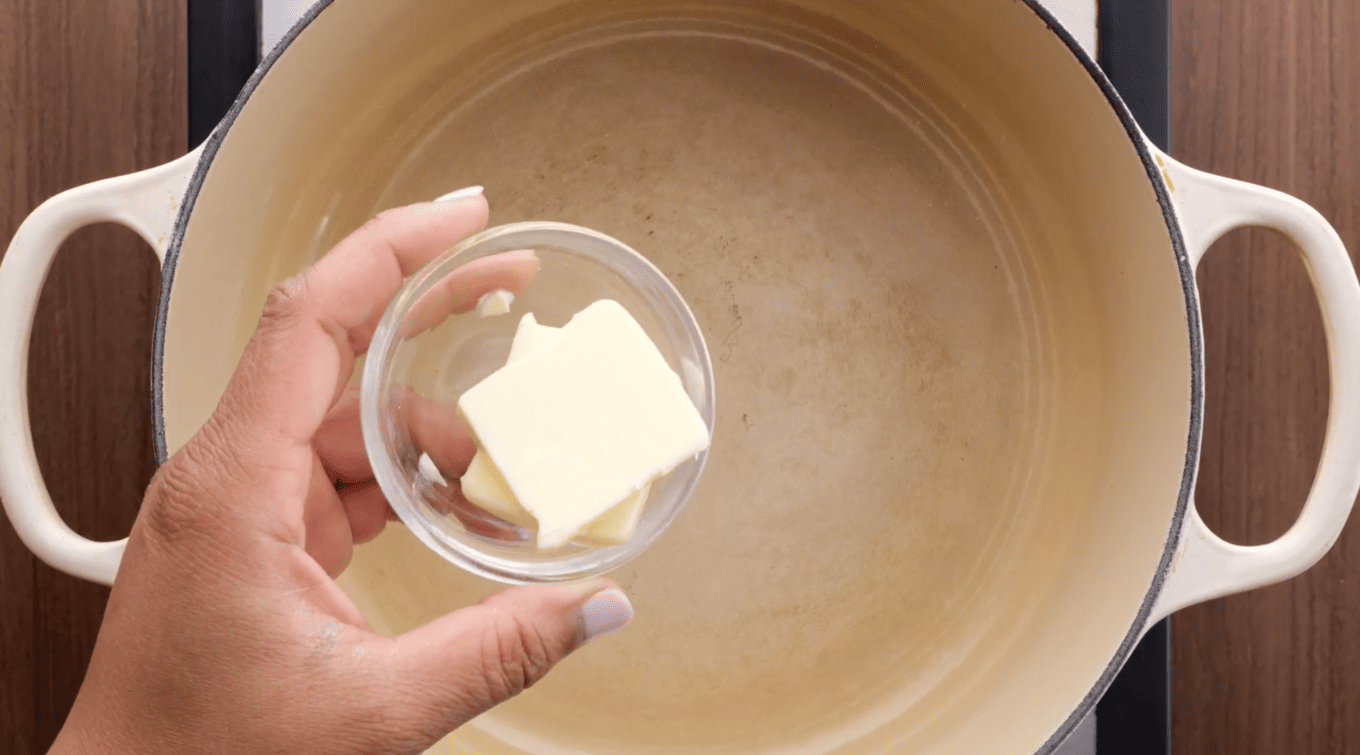
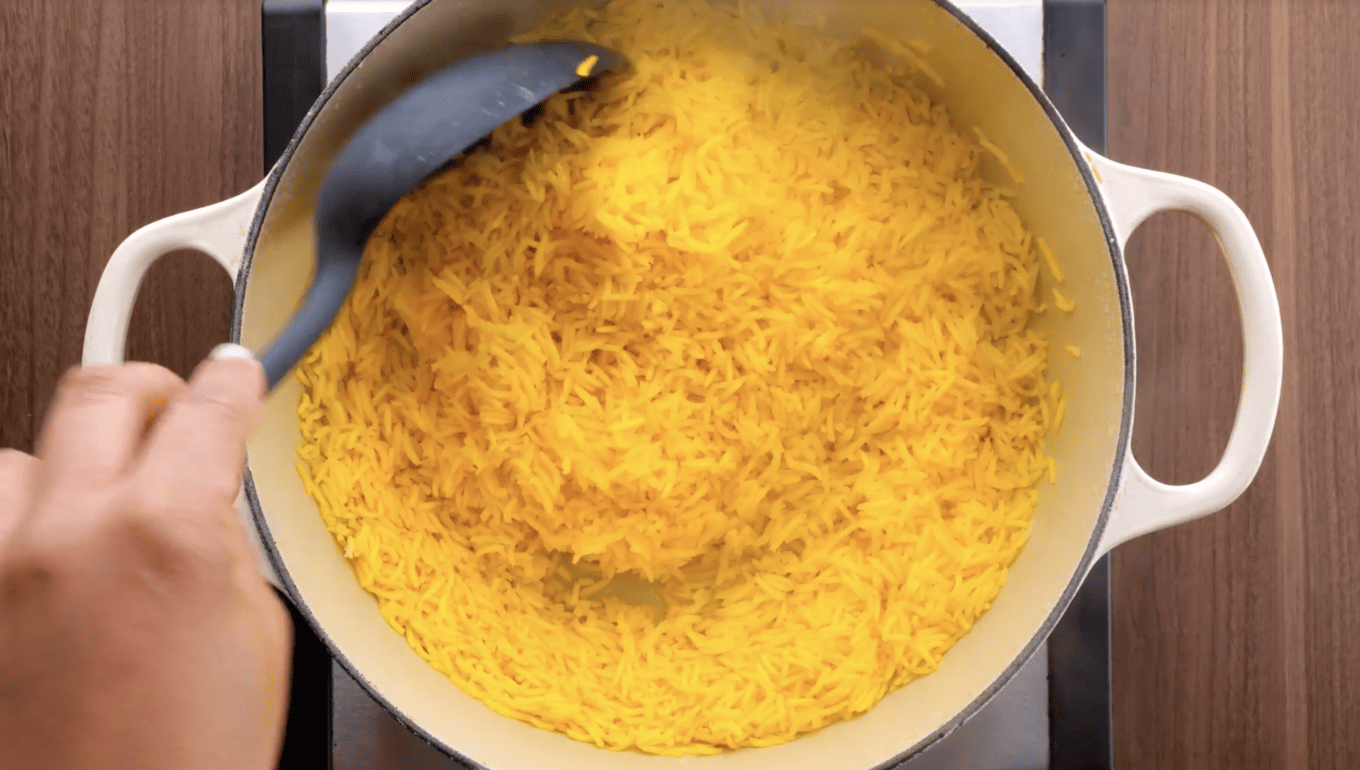

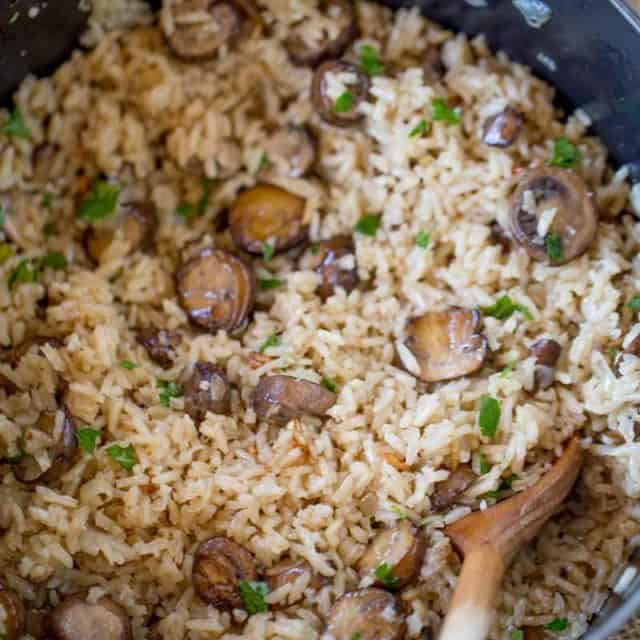
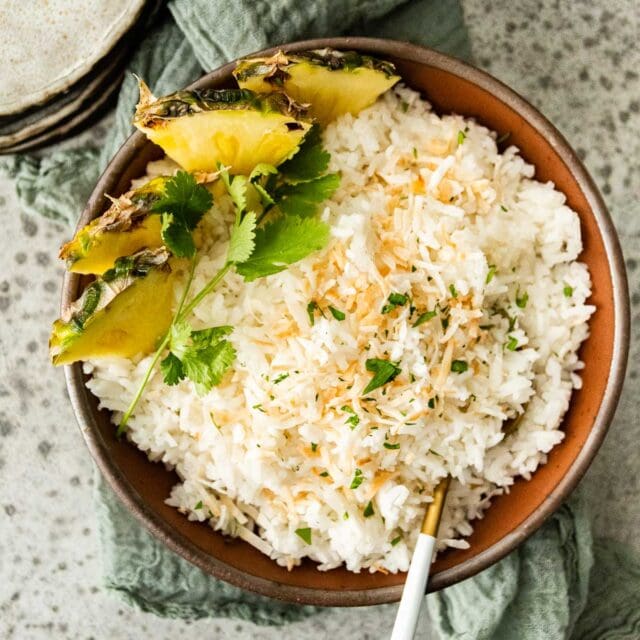

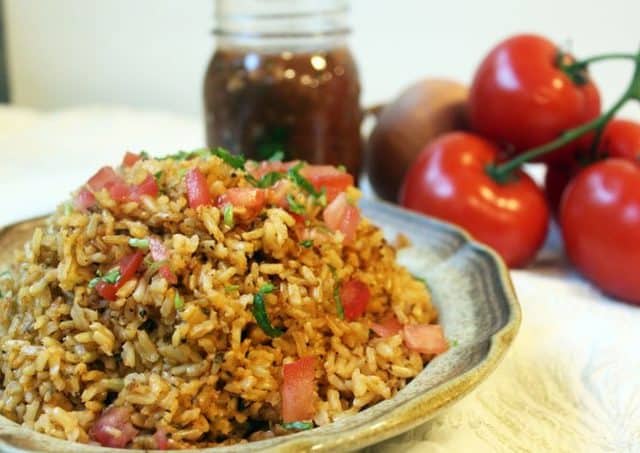

I have been looking fir this recipee for quite some time.
I am very entithuastic about reading every recipee you have do Kindly share.?
Thank you so much.
Hello Maria, feel free to click on “Recipe Index” on our http://www.dinnerthendessert.com website to peruse hundreds of recipes. Enjoy!
what brand that you use for the basmati rice?
Great recipe! Always turns out very savory and flavorful. Sumac is the perfect finishing touch.
Do Persian restaurant’s use water or broth (I’m thinking broth)?
The closest Persian style restaurant is an Iranian restaurant that is 2 hours away, four hours round trip. We go about 3-4 times a year, but it’s just too far. We order to go since out little ones are all 4y and under. So I’m very exited to try this!
Can I make the rice in a rice cooker?
Do you grind the saffron threads into a powder and then steep in water/broth, or steep the saffron threads in water/broth?
Smells yummy! But my rice didnt turn out as yellow as the picture. My saffron was high end from Spain. Did I not use enough?
Possibly, its hard to know for sure.
It is a mortar and pestle not a mortal.
But I enjoyed the typo!
Haha, thanks for catching that.